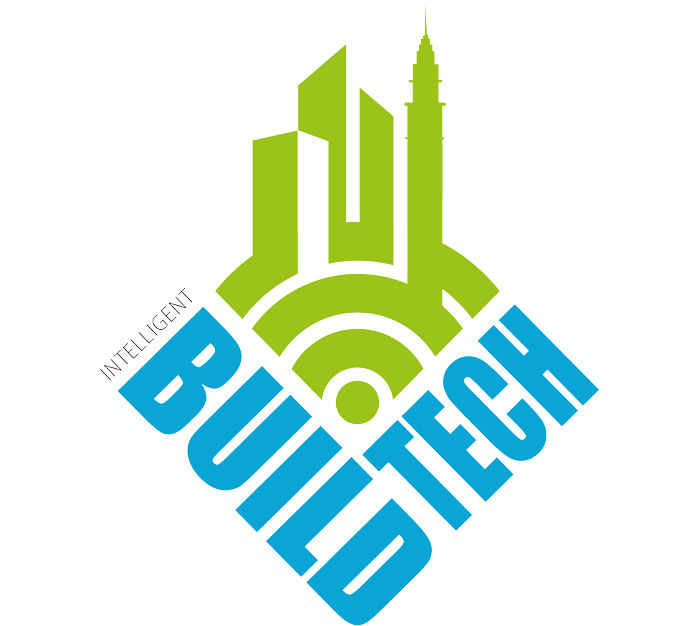Sector voices speak out for Women in Engineering Day.
Jennifer Frith, Factory Development Director, Davenham Switchgear
Despite best efforts, gender diversity in STEM continues to be an issue, with UK data suggesting that women make up just 16.9% of the engineering and technology workforce. The split is even wider in the data centre subsector, with less than one in ten employees (8%) being female. While things are moving in the right direction, progress remains incredibly slow – so much so, that we’re not predicted to see equal representation in STEM until 2070.
Meanwhile, the data centre sector is facing an ongoing skills crisis. Too few students are graduating with STEM degrees, and estimates that 1 in 5 engineers will retire or have retired by 2026 further add to concerns around an ever-widening skills gap. What’s clear is that a lack of diversity is more than a social issue – it’s also missing out on vital skills, fresh ideas and a broader talent pool. Yet, while the need for change is obvious, there are still too many barriers holding people back.
Rethinking career entryways
One of the biggest roadblocks to a career in STEM is the myth that you need to have a science or engineering background to succeed. But that isn’t true. I started working on the factory floor while I was studying media and photography – a completely unrelated degree – at university. That part-time role turned into a full-time position, and I was able to progress steadily up the ladder.
Today, as factory development director, I work closely with our engineering teams to make our manufacturing processes safer and more efficient. It isn’t where I thought I’d end up, but it shows that with the right mindset and support along the way, people from all backgrounds can thrive in this industry. If we’re serious about closing the skills gap, we need to challenge outdated assumptions about who ‘belongs’ in STEM and open the door to more non-linear journeys like mine.
Adapting to today’s workforce
Flexible working can play a key role in attracting more women into traditionally male-dominated industries. Accommodating for care responsibilities – which are still disproportionately managed by women – can help plug the gender diversity gap.
While flexibility can be hard to offer – particularly in the manufacturing sector, which is often restricted by tight schedules, deliveries and machinery that needs to operate at specific times – it’s a shift that the sector must consider. At Davenham, we’ve adopted a four-day week for our 350-factory staff in Ireland and Nottingham. For our female production workers, it’s a valuable extra day – whether for caregiving or simply to reset after a busy week.
Tackling stigma
There’s still a lot of misconceptions about what a career in STEM looks like – many still see engineering jobs as ‘dirty’ and male-dominated. We need to challenge that stigma and make people excited about working in the industry.
At Davenham, we’re taking a physical approach. Our brand-new facility in Nottingham has been kitted out with a sleek, contemporary design, with bright, open workspaces. And on our doorstep, we’ve got several walking and cycling routes through protected woodland and vibrant green spaces. From the early feedback we’ve had, from colleagues like Ikhrah, one of our female panel wirers, we know our teams already love working here and value the state-of-the-art space we’ve been able to build.
But changing the physical spaces is only part of the solution. What’s equally important is a shift in perspective. A career in STEM gives people the chance to work on meaningful projects that impact lives across the globe. Data centres in particular are becoming increasingly important to everyday operations, leading to the UK Government now classing them as ‘critical national infrastructure’. It’s an exciting, cutting-edge field that’s growing rapidly and it’s that message we need to amplify if we want to attract future STEM talent. The chance to work on something hugely valuable to the lives of billions of individuals around the globe.
Looking ahead
From my perspective, things are definitely moving in the right direction, but what the diversity figures and ongoing recruitment challenges show is that our work is far from being complete. It’s more than just filling the shoes left behind by retiring engineers – it’s also about opening the sector to new, untapped talent and perspectives. While days like International Women in Engineering Day raise awareness, it’s not enough.
Companies, us included, need to take action and commit to supporting the next generation of talent – whether that’s through offering work experience, speaking at schools to pique early interest or by providing alternative entryways through apprenticeships – something we’re on our way to opening up later this year, connecting with the fantastic business and academic network on our doorstep in Nottingham. Representation is so important, and I’m eager to play a role in demonstrating it can be done.
Aurore Knight, Associate Director, Black & White Engineering
I’ve always been interested in how things work. I originally thought I’d study Applied Physics but after some reflection, engineering made more sense. It offered practical application, a clearer path into industry and broader career options. I studied a wide range of disciplines before specialising in mechanical engineering, which eventually led me to building services.
I’ve worked at Black & White Engineering for over ten years, mostly in data centres and critical infrastructure design. The work is demanding but varied and that’s what keeps it interesting. You’re solving real problems, often across different geographies and regulatory contexts, but with shared technical challenges – efficiency, reliability and performance. The pace is fast, and expectations are high, but that’s part of the appeal. It keeps you sharp.
Conversations about women in engineering tend to focus on recruitment. But the bigger issue isn’t getting women into the sector – it’s keeping them. That usually comes down to whether the job allows people to stay in the profession during periods of change, particularly around family. This isn’t a theoretical concern, it’s something many women faceand it has a real impact on retention, particularly mid-career.
When I took a break to have children, I was given the time and flexibility I needed. That included reduced hours for a period and a working arrangement that allowed me to balance home and work without stepping away from my role entirely. It meant I didn’t have to choose between being present at home and continuing to progress at work. What worked for me won’t work for everyone, but simply being asked what I needed, and being trusted to make it work, made a big difference. Not everyone gets that kind of support and many leave the profession as a result.
Support doesn’t have to mean a blanket policy – a case-by-case approach is often more effective.
That same principle applies to mentoring. I’ve had excellent mentors throughout my career, both men and women. What mattered wasn’t whether they’d had the same experiences, it was whether they understood that different people face different pressures. The best mentors didn’t assume one route through the profession worked for everyone.
When I talk to younger people considering engineering, especially women, I try not to oversimplify it. If you’re someone who likes solving problems and figuring out how things operate, it’s a good fit. The skills you develop, particularly around analysis and structured problem solving, are useful across a lot of sectors, even if you don’t stay in a traditional engineering role forever. It’s a solid foundation that opens doors in all kinds of industries.
In building services, particularly data centres, the landscape is constantly shifting. The technical side is challenging, but the pace is what sets it apart. The systems we’re designing now are more complex, more integrated and more sensitive to changes in regulation and client expectation than they were a decade ago. There’s also a heightened focus on sustainability and energy efficiency, which is changing the way we approach everything from cooling systems to materials. That’s not always easy, but it does create space for engineers who are adaptable and thorough.
What I’d like to see over the next five to ten years is a shift in how the profession defines success. Full-time, uninterrupted careers aren’t the only valid model. Hybrid and flexible working should be part of the standard offer, not just for women, but for anyone with responsibilities or commitments outside the office. It’s also what younger engineers are increasingly looking for – people coming into the industry now often expect flexibility as a baseline, not a bonus.
It’s not about lowering expectations but rather being realistic about how people live and work in 2025. If you want to retain skilled engineers, you have to recognise that life doesn’t always fit neatly around a 9-to-5. When you make that adjustment, you actually gain productivity.
Engineering is often framed as a profession focused on systems and structures. But behind every design, every project and every delivery schedule, there are people. If the industry wants to grow, it has to work for the people in it. That’s how we build resilience into the profession itself.
Sigrun Gisladottir, Director of Engineering, Deltek
Engineering is all about collaboration, and International Women in Engineering Day is a timely reminder of the difference we can make when we come together.
“Too often, the focus in engineering is on systems, tools and processes. But its people that drive progress. When we create space for varied viewpoints, shaped by gender, culture, age, or experience, we open the door to richer conversations, better decision-making and ultimately, more balanced solutions.
“Throughout my career, I’ve seen how inclusive environments strengthen team cohesion and innovation. Whether it’s leading teams in creating ERP platforms, coordinating across global offices or maintaining product quality at scale, diverse perspectives have consistently strengthened design discussions, team cohesion and the broader workplace culture. I prioritise small group and one-on-one conversations to build trust, especially with colleagues who might otherwise hesitate to share their thoughts. This fosters psychological safety allowing more people to contribute meaningfully.
“It’s also important to acknowledge the less formal, human side of inclusion. Some of the most valuable interactions I’ve had with female colleagues have come from candid conversations about topics that are often difficult to bring up – such as pregnancy, health, or personal experiences in a male-dominated field. These moments help build deeper understanding and stronger working relationships. When we feel seen and heard, we’re more likely to thrive and stay.
“That said, there’s still more work to do. We need more women in leadership, more mentors to inspire the next generation of female engineers, and more diverse perspectives to drive technical innovation. We have a responsibility to lead change, champion inclusion, support future engineers and create environments where everyone can thrive. That’s how we will build a better industry.”
Devin Haynes, Product Owner, SIOS Technology
Women bring a unique perspective to tech. When women are part of tech teams, innovation improves. We challenge assumptions, encourage broader thinking and reduce groupthink. Women often approach technology with a focus on usability, empathy, and real-world application. These qualities are essential in designing systems that meet our world today. Women bring this diversity of thought to any room and the solutions that are developed are better all-around because of it. I often see that girls are hesitant to move into the tech field – that’s why representation matters. When girls and young women see me and others thriving in tech roles, it inspires them to do the same. It challenges the stereotype and opens their minds to a greater possibility. This is critical in a field where women, particularly women of color, remain underrepresented. Bringing more women into tech is a strategic advantage for any company. It leads to stronger teams, smarter products, and an industry that reflects the diversity of the world it serves.”
Krunali Patel, Senior Vice President and CIO, Information Technology Solutions, Texas Instruments
“I’m thrilled to see young girls and women continuing to enter the STEM field as engineers, scientists and problem solvers. They inspire me with their innovative, thoughtful listening and collaborative approach to solving problems. They are able to adapt to challenges, and in the face of potential failure, continue to bring their passion and energy to do the difficult things with objectivity and persistence.”




